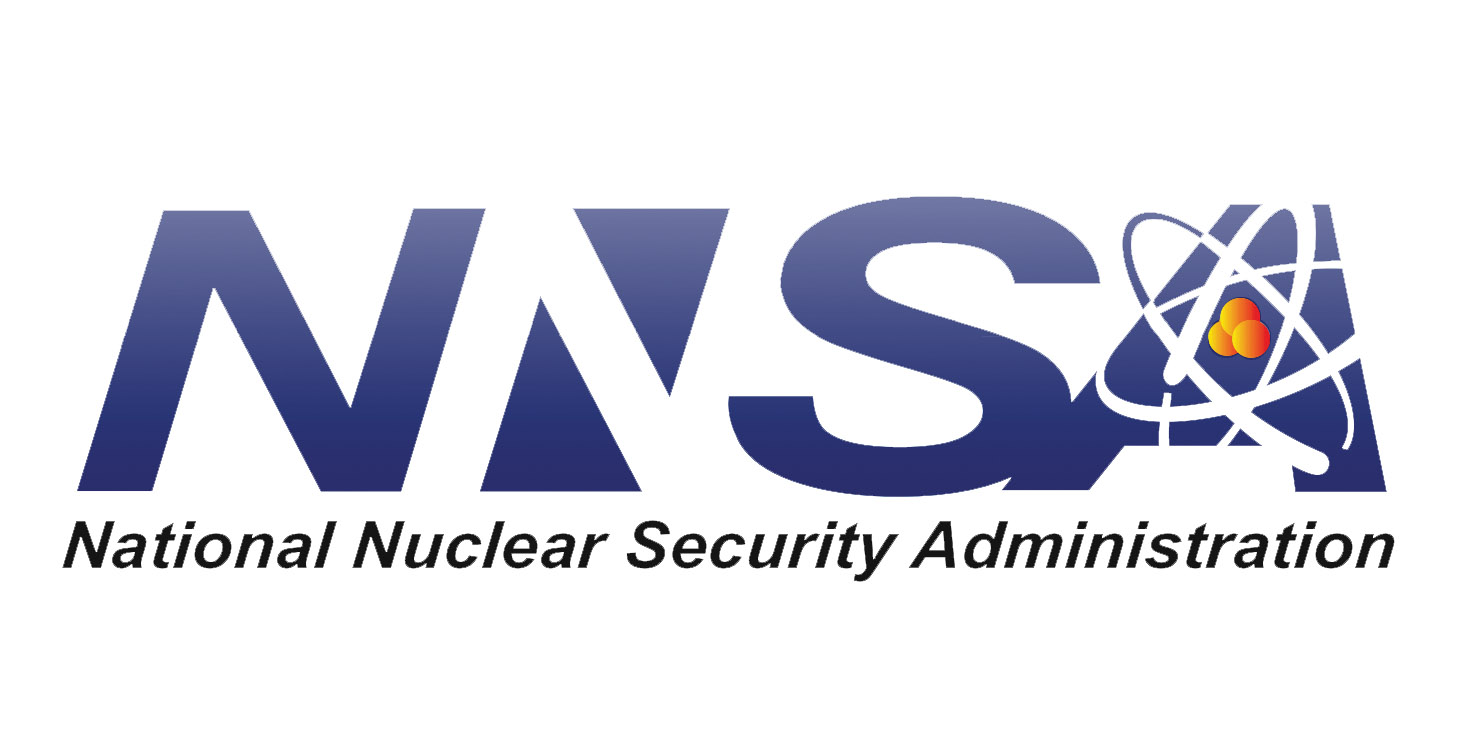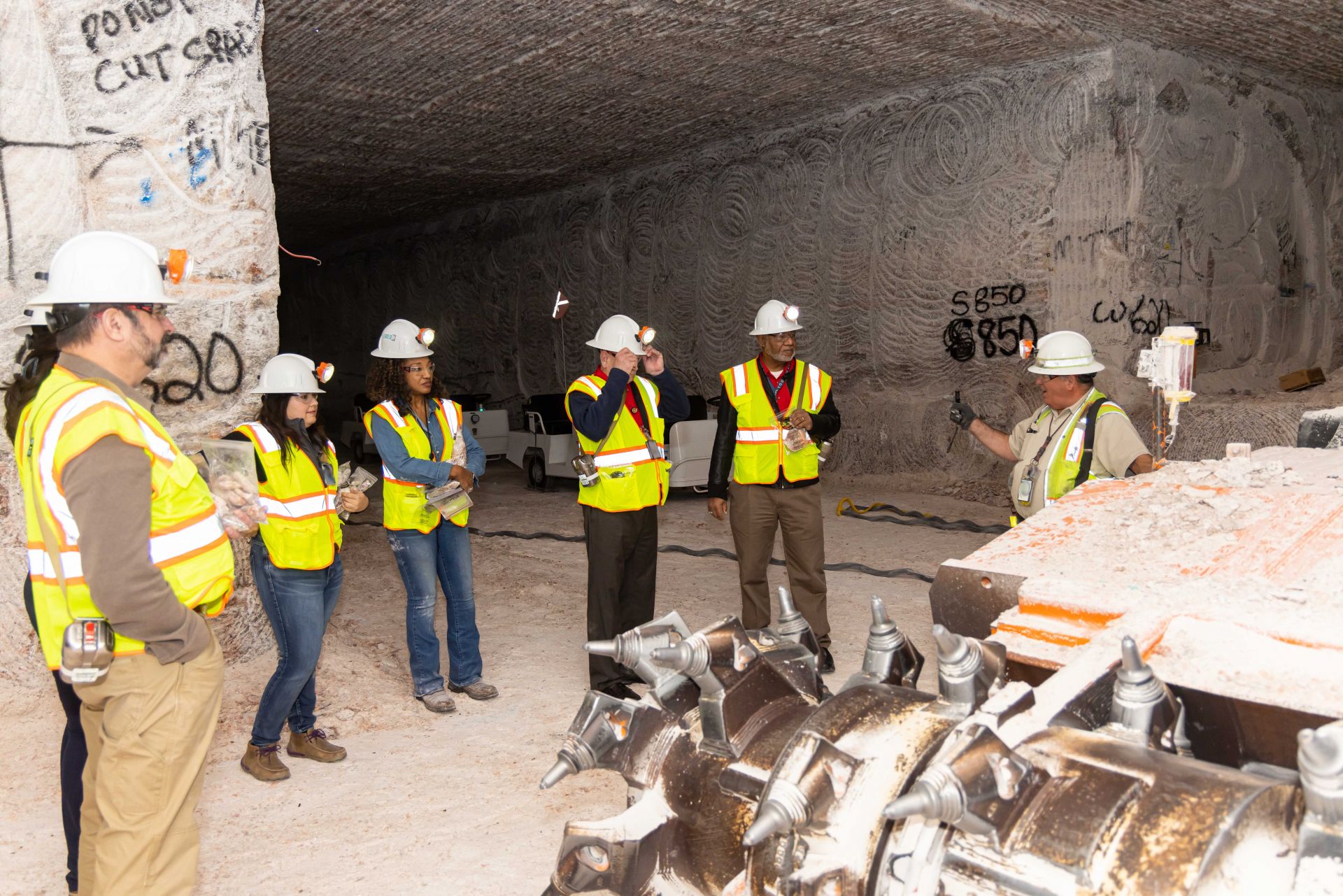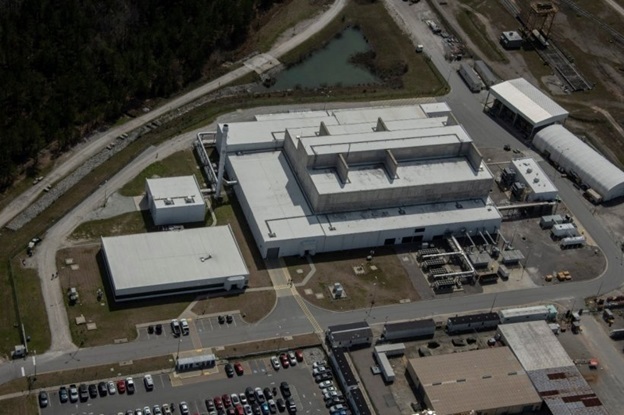SRMC operators demonstrate procedure compliance during a job at the Savannah River Site’s Saltstone Production Facility. SRMC recently won national awards for demonstrating a commitment to working safely. (Photo: SRMC)
Department of Energy cleanup contractor Savannah River Mission Completion (SRMC) has garnered national recognition for its commitment to safety, recently receiving three awards from the National Safety Council: the Occupational Excellence Award, the Perfect Record Award, and the Superior Safety Performance Award.
DOE and NNSA personnel at a meeting discussing the plans for the upcoming SRS landlord transition. (Photo: DOE)
Personnel from the Department of Energy’s Office of Environmental Management and the National Nuclear Security Administration recently gathered to discuss plans for the upcoming transfer of landlord responsibility for the Savannah River Site in South Carolina.
Savannah River National Laboratory employee Vernon Bush, center, and SRNL summer intern Jadrion Huell, standing at right, of Claflin University, conduct a job shadowing activity with students Tredarius Lassiter, seated at left, and Tommy Applewhite. (Photo: DOE)
A three-day Minority Serving Institutions Partnership Program (MSIPP) event, led by Savannah River National Laboratory researcher Simona Hunyadi Murph, was held recently at the South Carolina site, according to a release by the Department of Energy’s Office of Environmental Management (DOE-EM). The event included a collaborative workshop, job shadowing, and a tour of the laboratory and Savannah River Site field activities.
Southeast New Mexico College staff visit the WIPP site. (Photo: WIPP)
Two Department of Energy sites recently announced training partnerships with local technical and community colleges designed to offer students hands-on work experience while building a workforce pipeline to waste management jobs.
Savannah River’s DWPF has completed the conversion from formic acid to glycolic acid in the waste vitrification process. (Photo: DOE)
The Defense Waste Processing Facility (DWPF) at the Department of Energy’s Savannah River Site (SRS) in South Carolina has resumed operations after a completing a processing improvement that the DOE said will enable safer operations and more efficient vitrification of radioactive waste.
A crane is used to remove equipment during a project to repurpose Building 226-F for an NNSA mission at the Savannah River Site. (Photo: DOE)
Work has begun to prepare the Savannah River Plutonium Processing Facility (SRPPF) at the Department of Energy’s Savannah River Site in South Carolina for its future national security mission: the manufacturing of plutonium pits for the National Nuclear Security Administration.
A view of the Savannah River Site’s H Area. (Photo: DOE)
The Department of Energy’s Office of Environmental Management (EM) announced on October 18 that it has begun the process of transferring primary authority of South Carolina’s Savannah River Site (SRS) to the National Nuclear Security Administration, with the transfer expected to be completed in 2025.
Crews begin clearing the site on which Savannah River Site’s SDU 10 will sit. (Photo: DOE)
The Department of Energy’s Office of Environmental Management (EM) announced that it is preparing for construction of the final three planned saltstone disposal units (SDUs) at the Savannah River Site in South Carolina, which will complete the site’s liquid waste mission.
The SRS liquid waste contractor, Savannah River Mission Completion (SRMC), is overseeing the construction of the SDUs, which will receive decontaminated salt solution treated at Savannah River’s Salt Waste Processing Facility (SWPF).
A train pushes a container full of old equipment from H Canyon to a Savannah River Site disposal facility to make way for a new spent nuclear fuel dissolving campaign. (Photo: DOE)
The Department of Energy is preparing for an upcoming campaign to dissolve stainless-steel-clad spent nuclear fuel at its Savannah River Site in South Carolina by installing a new dissolver and an additional double-sized tank for storing dissolved material.
A view of the Savannah River Site’s Salt Waste Processing Facility. (Photo: DOE)
The Salt Waste Processing Facility at the Department of Energy’s Savannah River Site has performed largely as expected, processing more than one million gallons of radioactive waste during its first eight months of operation, the DOE reported on June 8. The SWPF is being used to treat the majority of the site’s remaining liquid radioactive waste, generated from the production of nuclear materials.
Savannah River’s DWPF has been pouring high-level waste canisters for a quarter of a century. Photo: DOE
The month of March marked the 25th year of radiological operations for the Defense Waste Processing Facility (DWPF) at the Department of Energy’s Savannah River Site in South Carolina. Radiological operations at DWPF, which is used to treat Savannah River’s high-level radioactive tank waste, began on March 12, 1996, with the first canister of vitrified waste poured on April 29 that year.
To date, more than 4,200 stainless steel canisters of vitrified waste have been poured at DWPF, according to the DOE.
The only operating waste vitrification plant in the nation, DWPF is operated by Savannah River Remediation, the DOE’s liquid waste contractor at the site. According to the DOE, DWPF operations are expected to continue for approximately 15 more years, and about 4,000 more canisters are scheduled to be produced. The DOE expects to begin hot operations at a second waste vitrification plant later this year at its Idaho National Laboratory site.















